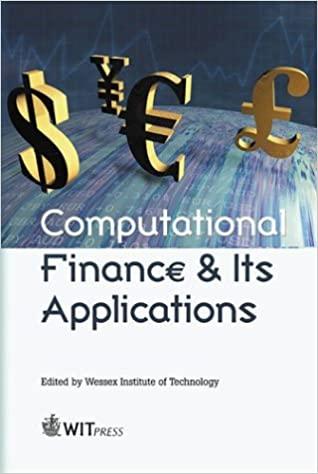Question
The following describes an actual investment fraud that occurred. Mr. Armstrong stands accused in a federal indictment for committing one of the most common frauds
The following describes an actual investment fraud that occurred.
Mr. Armstrong stands accused in a federal indictment for committing one of the most common frauds in the history of finance: making big promises to investors that he couldnt deliver. Mr. Armstrong is accused of securities fraud after allegedly trying to cover up millions of dollars in bets on the yen and other currencies and options that went horribly wrong.
It is probably not the ending that the 49-year-old Mr. Armstrong envisioned when he fell in love with business as a boy. It was a love that turned him into an active stamp dealer at just 13 years old, only to be kicked out of the stamp worlds most elite fraternity as a young man in 1972, amid accusations of selling extremely rare stamps that he didnt own and couldnt deliver.
Undaunted, he fought back and became a stamp authorityand eventually an authority on the far more sophisticated financial markets on which he was widely quoted. His self-confident forecasting style made him a hit in Japan, where Mr. Armstrong is now accused of bilking investors out of $950 million.
Documents he used to sell his investments show that he promised buyers of his securities that a yield of 4 percent was guaranteed on the fixed-rate instrument, a strong selling point in a country where interest rates on government bonds are less than half that. Moreover, the securities were designed to offer further returns as high as 25 percent, depending on market conditions.
Mr. Armstrongs bets on the markets increasingly began turning against him. The Securities and Exchange Commission says that from late 1997,Mr. Armstrong began to rack up increasingly big losses on large investments he made in currencies and options. Between November 1997 and August 1999,for example, SEC officials say Mr. Armstrong lost$295 million in trading the yen aloneall money that belonged to clients. In the wake of the discovery of the fraud, the SEC said in its civil complaint that was filed, Armstrong has transferred millions of dollars from Princeton Global accounts into foreign-bank accounts controls officials declined to disclose how much money Mr. Armstrong allegedly transferred overseas or to what countries.
On two previous instances, Mr. Armstrong did face commodities trading scrutiny. In 1985, the agency overseeing commodities trading in the United States lodged a complaint against him for allegedly not registering and maintaining proper investment records. Then in June 1987, the same agency fined Mr. Arm-strong $10,000 and suspended his trading privileges fora year for improper risk disclosure and misrepresentation of his trading returns. Part of the complaint was related to advertising in a Princeton newsletter.
Questions
1. Discuss the opportunities, pressure, rationalization that can be identify in the case.
2. What steps should be taken to make sure fraud does not occur, and what are the costs associated with these steps?
Step by Step Solution
There are 3 Steps involved in it
Step: 1

Get Instant Access to Expert-Tailored Solutions
See step-by-step solutions with expert insights and AI powered tools for academic success
Step: 2

Step: 3

Ace Your Homework with AI
Get the answers you need in no time with our AI-driven, step-by-step assistance
Get Started


